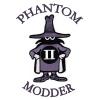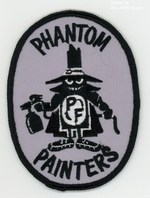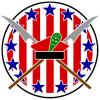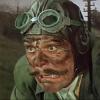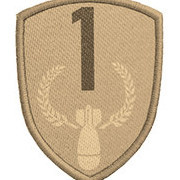Leaderboard
Popular Content
Showing most liked content on 08/16/2018 in Posts
-
6 points
-
6 pointsyes they are the problem with the enhanced versions is that i dont have any pictures of the seeker , i also had problems to get good pictures from the DSU-33 proximity fuze but they are in work now the only pictures i have are this from a GBU-31 this is a picture of the DAMASK seeker here are the GBU-32 for the USAF and USN , USMC and this is the MK-83 AIR for the USN , USMC that i just finish
-
4 points
-
4 points
-
2 pointsThere is nothing in the 3D model that controls the speed of the engine animations. The speed is controlled by the game engine. The model maker creates several versions of the prop (static prop, slow prop, fast prop, damaged prop) and attaches them to the prop shaft. The game engine spins the prop shaft and calculates the RPM of the engine based on the throttle setting (controlled by the user) and the settings in the [Engine] portion of the plane's data.ini. Then the game switches the version of the prop based on the RPM settings in the [Engine] settings. I didn't notice the problem until after I read the postings by Crawford and VonS. I don't know what settings in the engine data control how fast the engine speeds up/slows down. You could probably get some change by playing with the RPM settings that VonS mentioned.
-
1 pointView File CF-121Redhawk In 1959 Canada bought 30 Soviet Mig-21F Fishbeds. With the failure of the Avro Arrow Canada needed some high speed interceptors but this project only lasted over 2 years before selling them off. The F-101B Voodoo was Canadas main interceptor purchased from the USAF to fill the needs. Submitter ext Submitted 08/15/2018 Category What If Hangar
-
1 pointHello fellow flyers of First Eagles 2, Please find attached below an all-in-one zipped file of the latest works in progress by Geezer. Geezer may in the future return to work on these projects further, but he is currently busy with real life and other hobbies. However, he has kindly given permission to the First Eagles 2 community to release the latest versions of his works-in-progress aircraft. You will find included in the zipped folder various types and sub-types, also a couple of extra sounds, the latest sounds ini file for your Flight folder, and also a Read Me file that includes more info. on the latest FM tweaks for these models. Work on Geezer's models not released yet as works-in-progress happily continues behind the scenes. A great many thanks to Crawford, Coupi, Jeanba, and Mike Dora for continued input on these works, and of course a great thanks to Geezer for these beautiful models. (Note: the Pfalz D.III was also used in the middle eastern theater - suggested service dates for that theater are from about July to October of 1918.) Happy flying, Von S EDIT: Attachment removed, will be placed in separate post as "consolidated" file with all latest updates, for convenience.
-
1 pointSoulfreak, Very Nice. Will you release these skins or are they for personal use only? Have you tried to paint the black band in the cockpit between the pilot and co-pilot? I've tried but have had no good luck. Mandatory Screenshot.
-
1 pointP.S. The most interesting thing is that the propeller does not stop short at other planes made by Stephen. We can recall his Nie.12, SPAD-11/16, Roland D.II, for example. Apparently, in the case of SSW D.I , S-16 and the SPAD A.2 )) , Steven simply "forgot" to fasten to them this effect.
-
1 point
-
1 pointUSAF F-94B Starfire, Intercept Mission, Korea 1952. (EricGen's F-94B Starfire; One of my favorite PauloPanz's skins repainted natural metal; new lines, rivets, etc.)
-
1 pointUSAF RF-80C Shooting Star, Photo Recon, Korea 1952. (EricGen's SF2 RF-80C; PauloPanz's orginal skin repainted natural metal; new lines, rivets, etc.)
-
1 point
-
1 pointMesserschmitt-Bölkow-Blohm Panther - Marineflieger 1, Deutsche Marine, 2007 Formed as the result of several mergers in the late 1960's the German aerospace manufacturer Messerschmitt-Bölkow-Blohm (MBB) became an integral part of the Panavia consortium designing and building the swing-wing Tornado for the air forces of Germany, Italy and the UK. But as early as 1975, MBB began to conduct research into the field of stealth aircraft and during 1981 MBB began developing a design for a viable stealth aircraft supported by funding from the German government. The resultant design was known as 'Project Lampyridae' (Firefly) and independently of American stealth research the Lampyridae used a similar 'faceted' design approach to Lockheed's 'Have Blue' technical demonstrator and the subsequent F-117 Nighthawk stealth attack aircraft. However, shortly after the existence of the Lampyridae project was revealed to the United States (during a technical exchange meeting at MBB's Ottobrunn facility in Bavaria in 1986) the Lampyridae project was suddenly terminated for unspecified reasons but diplomatic pressure on the part of the United States has long been assumed. MBB's dissatisfaction with this decision was short-lived when they were unexpectedly given an invitation to participate in the Grumman X-29 Forward Swept Wing project. The X-29 was a project to design and test a forward-swept wing fighter with canard control surfaces and other innovative aircraft technologies such as the use of computerised fly-by-wire controls and the use of composite materials to control the aeroelastic divergent twisting experienced by forward-swept wings and to reduce weight. The first X-29 took to the air in 1984 and the two X-29s were flight tested during the remainder of the decade but whilst the programme was an overall success there was some disappointment that the X-29 did not demonstrate any noticeable increase in agility - primarily due to the flight control system being moderated to prevent any excessive pitching rotation that could cause the aircraft from departing out of control and/or suffer structural damage. MBB could see that a combination of the stealth qualities of their Project Lampyridae allied to a forward swept-wing design but with larger control surfaces (and faster control surface actuators) would lead to an operational agile stealth fighter aircraft. In 1990, and with the backing of the German government, they launched 'Project Panther' to design and built a new multi-role stealth fighter for the German Air Force and Marineflieger with a projected in-service date of 2002. Using the excuse of reunification costs Chancellor Helmut Kohl made an election promise to cancel the Eurofighter and in mid-1991 German Defence Minister Volker Rühe withdraw Germany from the Eurofighter project and quietly diverted Germany's Eurofighter funding into Project Panther. To avoid the problems associated with concurrently developing a new airframe and a new engine, MBB selected the logical off-the-peg choice of the General Electric F110-GE-132 afterburning turbofan rated at 17,000lbs dry thrust and 32,000lbs thrust with afterburner and the Panther's closely spaced twin engines incorporate MBB designed 2D pitch-axis thrust vectoring nozzles with a range of ±20 degrees. These engines give the Panther a thrust-to-weight ratio greater than unity when in a typical combat configuration and without external stores the aircraft can achieve 'supercruise' to about Mach 1.2 and exceed Mach 2.0 with afterburner. Development moved swiftly during the mid-1990's and the first prototype 'Panther 01' (one of an eventual eleven engineering and manufacturing development aircraft) was unveiled at Ottobrunn, Bavaria on April 1st, 1998 taking to the air on August 15th, 1998 and appearing at the Farnborough air show during the following month where it appeared in the static park before making a low-speed flypast and departure on the final day. The first production contract was signed on January 2nd, 1999 for 170 Panther ADV aircraft (optimised for air defence) and 180 Panther IDS aircraft (optimsed for strike/attack) although differences between the two are confined to avionics and the two variants share virtually identical airframe and propulsion systems. In 2002, a major programme review saw a decrease in the overall number of aircraft to be procured from 350 to 280 and a multi-year procurement plan was implemented to stretch out production with an acceptable increase in the system unit cost (aircraft, training and spare parts) from €70 million per aircraft to €85 million per aircraft although this had further increased to €90 million per aircraft by 2005. Entering service with Marineflieger 1 in 2006 the Panther currently serves with the German Air Force and Marineflieger and has been exported to Denmark, Norway, Saudi Arabia, Turkey and the United Arab Emirates and is currently in the running to replace the Finnish Air Force's ageing F/A-18 Hornets in the so-called HX Fighter Programme with a decision now scheduled to take place in 2021. My trawl of the SF1 archives continues...
Important Information
By using this site, you agree to our Terms of Use, Privacy Policy, and We have placed cookies on your device to help make this website better. You can adjust your cookie settings, otherwise we'll assume you're okay to continue..

